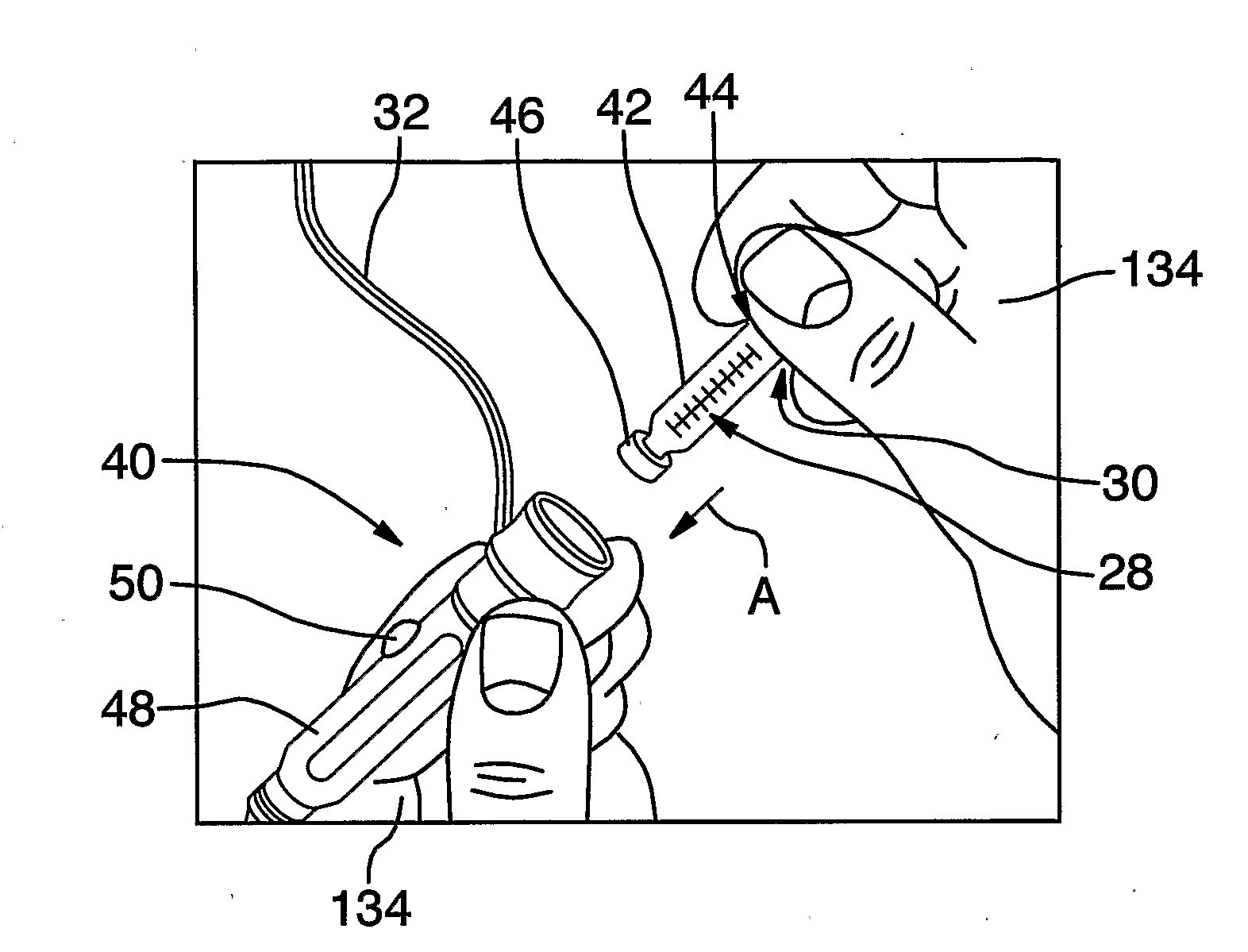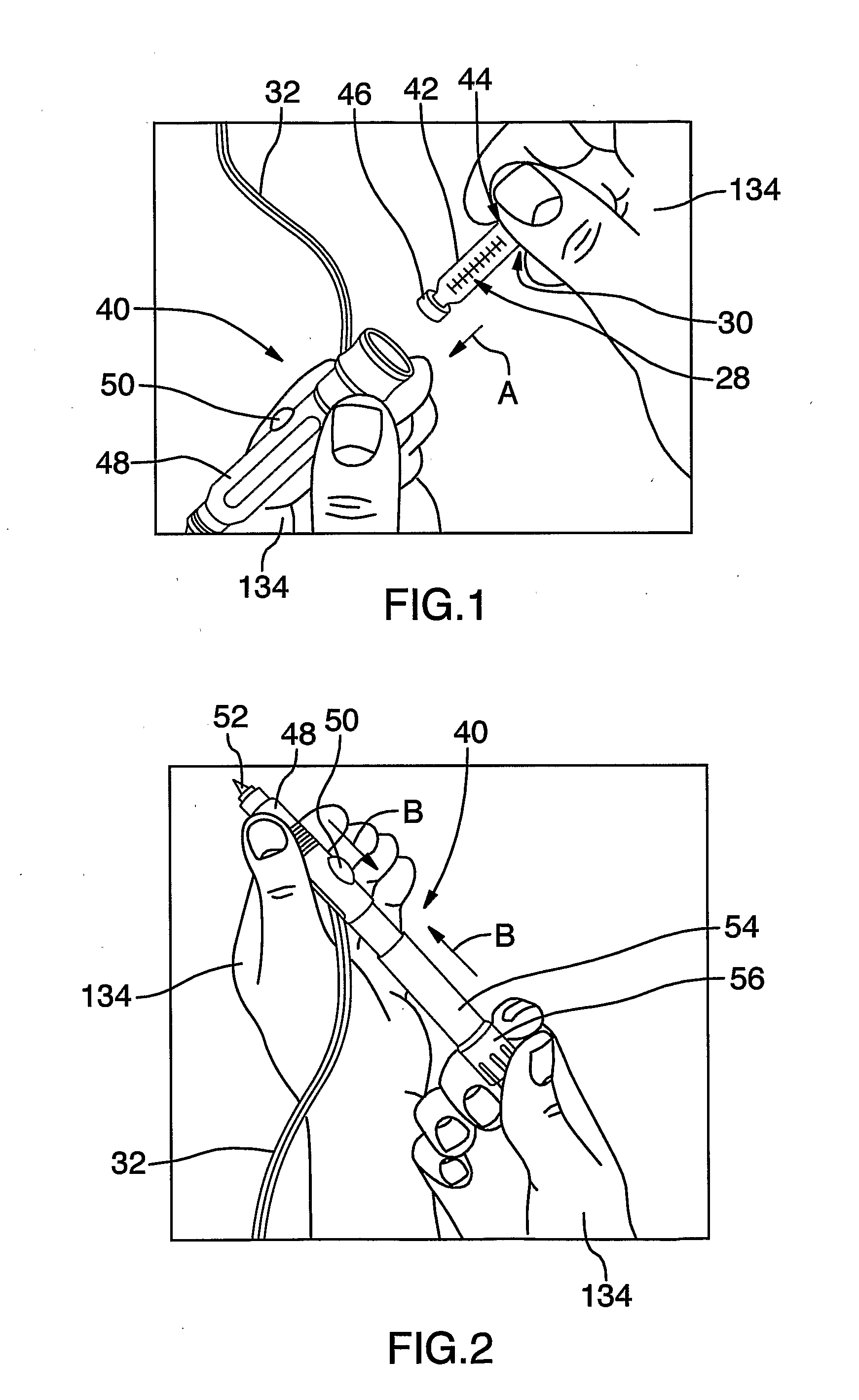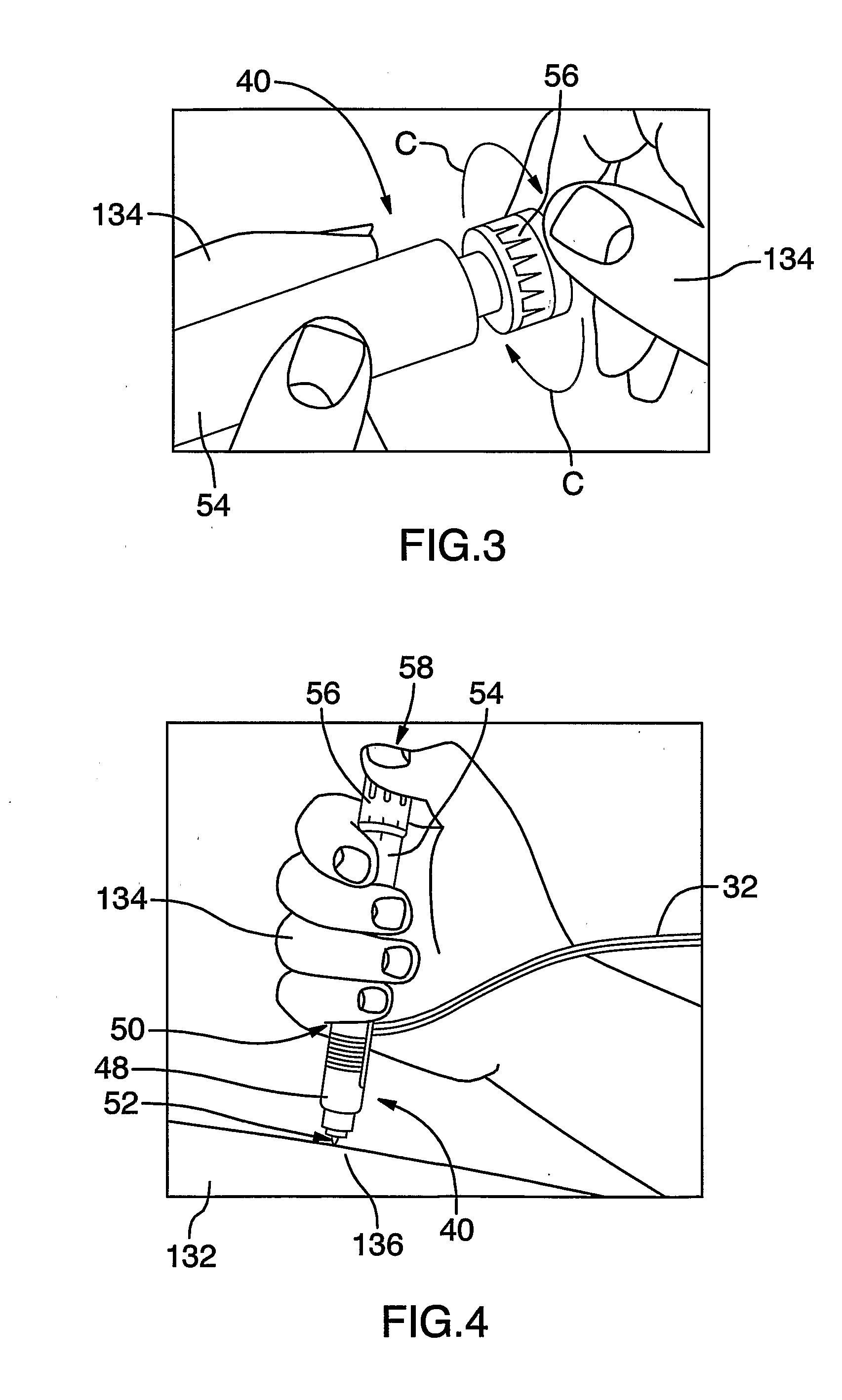Method of Delivery of Therapeutic Metal Ions, Alloys and Salts
a metal ion and metal ion technology, applied in the direction of biocide, medical atomisers, inhalators, etc., can solve the problems of far ineffective treatment, resistance, and compromised body defense mechanisms, and achieve the effect of facilitating the delivery of metal substances and facilitating the delivery of therapeutically effective doses
- Summary
- Abstract
- Description
- Claims
- Application Information
AI Technical Summary
Benefits of technology
Problems solved by technology
Method used
Image
Examples
Embodiment Construction
[0084]Until quite recently, prior art apparatus and methods of treatment for patients infected with viruses which the body could not defeat with its own immune system, only delayed death. The methodologies of the present invention provide a means for destroying viruses, such as, for example, the HIV virus, and also lend themselves to treating a wide range of blood-borne pathogens, including bacteria, viral, fungal and vector induced infections. The objects are achieved in the present invention, inter alia, by way of modifications made to several pre-existing therapeutic delivery systems which have the effect of achieving significant improvement in the in situ delivery of therapeutic metal ions, metal alloys, metal salts (and combinations thereof) to the body of an infected patient in a controlled manner.
[0085]Several preferred modes and methods of delivering therapeutically efficacious doses of metal substances (including metal ions, salts, alloys and combinations thereof) to plants...
PUM
| Property | Measurement | Unit |
|---|---|---|
| Time | aaaaa | aaaaa |
| Time | aaaaa | aaaaa |
| Power | aaaaa | aaaaa |
Abstract
Description
Claims
Application Information
 Login to View More
Login to View More - R&D
- Intellectual Property
- Life Sciences
- Materials
- Tech Scout
- Unparalleled Data Quality
- Higher Quality Content
- 60% Fewer Hallucinations
Browse by: Latest US Patents, China's latest patents, Technical Efficacy Thesaurus, Application Domain, Technology Topic, Popular Technical Reports.
© 2025 PatSnap. All rights reserved.Legal|Privacy policy|Modern Slavery Act Transparency Statement|Sitemap|About US| Contact US: help@patsnap.com



